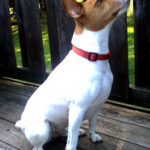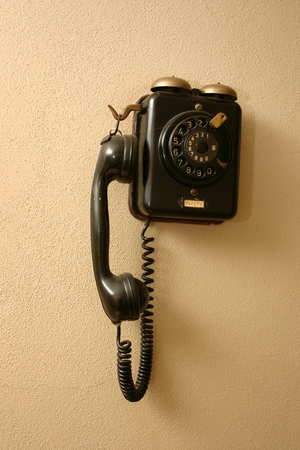Jack Russell Terriers come in three coat types: smooth, broken, and rough. The smooth coat is exactly what it sounds like: a short, smooth expanse of fur that lies flat along the body. The difference between rough and broken, however, can sometimes be harder to see. A JRT with a broken coat has a smooth under-coat with longer, wiry “guard hairs” that lay atop the under-coat. Rough-coated JRTs have a thick, dense, sometimes fluffy under-coat, and longer guard hairs than the typical broken coat. These guard hairs are what give the JRT its signature scruffy look. We have some of each type, and there are times when I truly believe that the smooth coat JRTs shed worse than any of the others.
On the whole, I’d rather spend an hour a day vacuuming the carpets in the house than spending several hours a week hand-stripping a rough or broken coated JRT. The vacuum cleaner is a lot easier on the fingers! But, there’s no denying how great a terrier looks when it’s been well-groomed and hand-stripped.
Hand-stripping is the “preferred” method of thinning the coat on a Jack Russell that is to be shown in the conformation ring. Unlike using a stripping comb or clippers, hand-stripping leaves the coat in its natural state. A comb will often leave behind broken hairs, and clippers leave the coat with an unnaturally smooth look.
However hard hand-stripping can be on your hands, I can’t argue with how good it makes a dog look when it’s done well. When doing it for the first time, though, it’s best to work in small sections. First, your hands won’t be up to stripping the whole dog at once, and your dog probably won’t want to sit still for it either.
The best way to hand-strip your JRT is to start at the top of the head. Grasping a few hairs at the very end between thumb and index fingers, pull gently in the direction of the hair growth. This method typically produces a few hairs at a time, and it takes a while, but it is the easiest way for your dog. By pulling slowly, and by gripping just the very tips of the hairs, you get the hair that is already loose, rather than tugging on hair that is still firmly attached. Continue to slowly work your way down the back, and then down each side.
Hand-stripping is time-consuming, especially the first time around. However, once you’ve stripped your dog out really well, you’ll find that subsequent sessions are easier and shorter. You’ll also notice a definite improvement in the overall quality of your dog’s coat.
If you don’t plan on showing your dog, or simply don’t have the time to hand-strip, a stripping comb is the next best method. These combs have several different blade sizes, from extra coarse on up through extra fine. My personal favorite is a brand called Mars Coat King; they have a comfortably shaped wooden handle, and a forged steel blade. I use the coarse blade on my terriers, and then a fine-bladed stripping knife for the face, ears, and neck.
A stripping knife is a narrow metal blade with short teeth. The knife is held in the right hand and placed parallel to the dog’s coat. Taking a few hairs between your thumb and the knife blade, give a short, sharp tug in the same direction as the hair growth. Many terriers take some time to get used to a stripping knife being used around their face, so I typically give a few pulls with the knife, then a couple of strokes somewhere on the body with the comb. This alteration gives your dog time to concentrate on how good the comb feels, and less time to think about how weird his face feels.
If at any time your terrier jerks away, growls, or nips at you or your grooming tools, stop immediately. Give your dog a treat for being good, and wait for at least an hour before beginning again. Eventually, your dog will equate the treats and your praise with a grooming session, and what was initially an ordeal will soon become a pleasurable bonding activity.
If you have an older terrier, a set of electric clippers may prove easier on both of you. The clippers will provide a fast, smooth cut, and will leave your terrier’s coat a comfortable length. Look for a set of clippers with at least two speeds, and quiet functioning. Investing in a high-quality set of clippers rather than settling for the cheapest set you can find will result in a far easier grooming experience for both of you.
As for bathing, there are as many different opinions as there are terrier owners, it seems. I personally bathe my dogs at least once a month; more if they’re especially filthy. Some people feel that a terrier should only be bathed when absolutely necessary, and others feel that they should be bathed as often as once a week.
There are numerous products on the market today for washing your dog. I’ve tried a number of them, as well as other products, and finally settled on V05 shampoo and conditioner. I do notby any means recommend to anyone else that they use products designed for humans on their pets. I simply mention that I use it on mine because I like the way it works.Always consult your veterinarian before utilizing any product not meant for dogs on your terrier.
There is far more to bathing your dog than just selecting a soap, though. One common mistake is in the temperature of the bath water. Many people mistakenly use water on their dogs that is set to a comfortable temperature for a person, not a terrier. Since dogs have a higher core body temperature than humans, they need a correspondingly low temperature for their bath water. A comfortable bath for a dog should feel tepid, or lukewarm, to a human being.
Since terriers typically have a coarse, wiry coat, blow-drying after a bath is not recommended. The best way to dry a terrier is to give a brisk toweling after the bathing, and then “rugging.” Rugging involves folding a medium-sized bath towel and wrapping it snugly around the dog. The towel should cover your terrier from the neck, down the shoulders, and around the body to the base of the tail. Safety pins are the best method of securing the towel. Rugging will cause the coat to lie flat and close to the body when dry.







